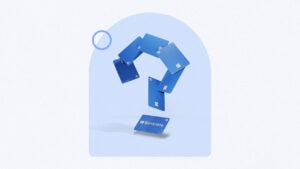Click to Pay: What it is, how it works

Key Takeaways
- Click to Pay allows customers to make purchases with just one click, eliminating the need to manually enter credit card information.
- Click to Pay is a safe and secure method, as it uses tokenization and two-factor authentication for transactions.
- While convenient, users must be careful not to overspend due to the ease of purchasing.
In 2019, Visa, American Express, Mastercard and Discover revolutionized online shopping by introducing Click to Pay, making buying everything from clothing to camping supplies even simpler.
But what is Click to Pay, and is it a good option for you? It all depends on how important speedier online transactions are to you — and if you have the self-control necessary to avoid overspending when purchases are just a click away. It’s also good to know that Click to Pay isn’t offered everywhere, although it is offered by over half a million online stores for Visa cardholders.
What is Click to Pay?
As its name suggests, Click to Pay allows you to purchase items from online retailers and service providers by clicking just one button. You can then choose from a list of credit and debit cards you’ve already saved through Click to Pay to complete the purchase.
The goal here is speed: you won’t have to manually type in your credit card information with every purchase. You’ll only have to select the Click to Pay button and choose the pre-saved card you want to use. Click to Pay then provides the online merchant with the information it needs to close the sale.
This process is also very safe. Your credit card information is never shared with merchants and never leaves the Click to Pay system. This is a secure way to pay and makes it more difficult for scammers to steal your credit card information.
How does Click to Pay work?
To use Click to Pay, you’ll first have to sign up for the service and add your credit cards to your account. Here’s how:
- Log on to Click to Pay from any of the major card networks: Visa, Mastercard, Discover or American Express.
- Once you log into one of these sites, you’ll be asked to enter the information from the cards you want to enroll in Click to Pay.
- Then, when you see the Click to Pay logo on any retailer’s website — a square with right-facing arrows usually followed by the Discover, American Express, Visa and Mastercard logos — simply click on that button.
- You’ll receive a six-digit security code on your phone or other device. Enter that security code to access Click to Pay.
- Choose whichever of the linked credit cards you’d like to use to complete your purchase.
That’s right: you won’t have to memorize a password to use your cards with Click to Pay. You’ll instead rely on the unique security code that Click to Pay sends over.
Benefits of Click to Pay
If you do most of your shopping online, connecting one of the best credit cards for online shopping with Click to Pay can make your shopping and rewards-earning strategy seamless. Here are some of the main benefits of enrolling:
- Simplicity: Customers using Click to Pay won’t need to repeatedly enter their card, shipping and billing information when making purchases through websites and apps.
- Speed: Since Click to Pay uses previously-inputted card information, customers can check out with the simple click of a button.
- Security: Merchants and service providers no longer need to store sensitive card information with this feature. This reduces the technology burden for merchants while also providing a safer checkout process for consumers.
But Click to Pay isn’t just a win for shoppers. American Express surveyed U.S. merchants in 2022 and found that 79 percent of merchants who accept online payments agree that their online checkout experience needs to be simplified for consumers. Click to Pay offers a more seamless option for both merchants and consumers.
Is Click to Pay a safe way to shop online?
Click to Pay transactions are secure, largely thanks to tokenization. When you buy something with the Click to Pay feature, your credit card information is turned into an encrypted virtual card number that is unique to that specific transaction. It’s much easier for a criminal to steal your credit card number when you enter it into a website than it is for the same scammer to crack your personal financial information when it’s been tokenized.
When you make a purchase through Click to Pay, merchants never receive your credit card number. This adds a layer of protection.
Click to Pay also uses two-factor authentication to boost security. When you click on the Click to Pay logo, you’ll be sent a verification code. You won’t be able to complete your transaction without entering that code on the Click to Pay screen.
Keep in mind: Convenience is a double-edged sword. It’s easier to give in to impulse buying and blow your budget when you can make purchases almost instantaneously.
The bottom line
Though acceptance is still on the rise, many merchants offer the Click to Pay option on their websites. Some of Mastercard’s featured Click to Pay merchants include Walgreens, The Walt Disney Company and Costco.
Click to Pay makes it easier for consumers to use their credit cards online at an increasingly large number of online retailers. This is good for convenience and, considering how safe transactions through the service are, for security. But be careful — spending with the Click to Pay button is easy. Don’t let that simplicity lull you into overspending and running up too much debt on your credit card.






